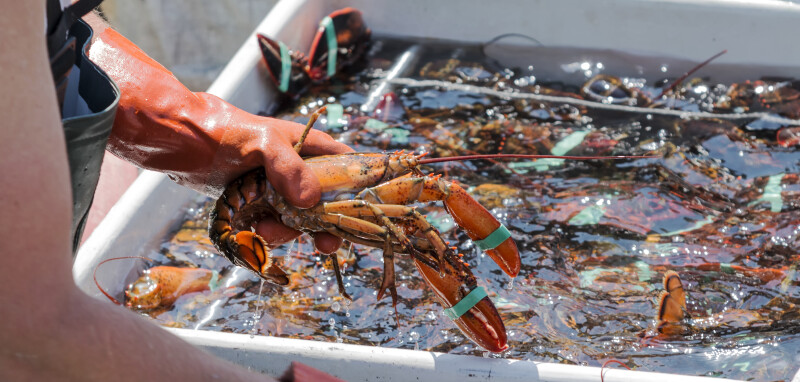Experiments conducted at the Virginia Institute of Marine Science (VIMS) have shown that female American lobsters groom their offspring, and the grooming behaviors appear to remain stable despite the temperature and acidity conditions projected for Maine’s coastal waters by the end of the century. A study by researchers at William & Mary’s Batten School of Coastal & Marine Sciences shows that the species may be more resilient to the effects of climate change than previously thought.
The study examines how a changing climate may impact the reproductive success of species that brood or incubate and hatch their eggs. The findings were published in the journal Marine Ecology Progress Series and suggested that American lobsters can handle future ocean changes well, as their egg care and survival rates stayed stable under different conditions through the study’s tests.
Digging into the study
The study’s researchers partnered with the Maine Department of Marine Resources to obtain 24 lobsters from commercial operations for the study for five months. They secured female lobsters at market size with all legs intact, which are commonly lost in the wild.
Researchers studied how different temperatures and pH levels affect lobsters' care (grooming) for their eggs during development. Over five months, they exposed egg-bearing females to various conditions, including warmer temperatures (+4 degrees Celsius), more acidic water (-0.5 pH), and a mix of both. They examined how these conditions affected egg production, embryo growth, and the lobster’s egg-caring behavior at different stages. Egg loss and caring behaviors did not change significantly with temperature or pH, further emphasizing that survival was stable no matter the condition.
Researchers observed three distinct grooming behaviors: tail fanning, in which lobsters elongate and retract their tails to promote water movement through the eggs; pleopod fanning, in which the lobsters use small fins called pleopods on their tails to circulate water around and through the egg mass; and pereopod probing, in which lobsters use one of their five walking legs to poke and probe the eggs to remove parasites and dead eggs.
Gulf of Maine lobster fishery
The lobster fishery is one of the biggest commercial fisheries in the U.S., with $460 million coming from Maine alone. The Gulf of Maine (GoM) is warming faster than 99% of the ocean due to its shallow waters, rivers flowing into it, and Georges Bank, which helps block the GoM from the cold North Atlantic waters. Therefore, it’s important to address the impacts climate change will have on the sustainability of the species and the fisheries they support.
Maine lobstermen face climate change uncertainty in the GoM waters and have the pressure of a planned gauge change to increase the minimum allowable catch size in Lobster Management Area 1 just next year. The benefit of this study for American lobsters and the lobster fishery is the resilience to the effects of climate change.
“Brood grooming by female lobsters has been anecdotally observed, but it had not been quantitively recorded before,” Abigail Sisti, the study's lead author, shared with Phys.org. “In other crustaceans, these behaviors can have a significant impact on the survival of their offspring. Because the environment supporting the lobster fishery is rapidly changing, we wanted to understand how it might impact the way they care for their offspring.”
Throughout the study, Sisti, along with other students, reviewed dozens of hours of recordings from underwater cameras, documenting the frequency and type of grooming behaviors and overall survival of the embryos. They hypothesized that grooming would increase in response to environmental stressors.
Sisti told Phys.org, “We did observe a number of grooming behaviors that’s increased the frequency during embryo development. However, neither water temperature nor acidification at the levels in our experiments caused significant behavioral changes or impacted embryo survival. This is encouraging because it shows lobsters may be reproductively resilient to forecasted environmental changes.”
Due to the variables in the study using open ocean conditions, researchers are curious to see what other study’s outcomes would be with different environments. Lobsters often prefer rock habitats and sand mounds to hide from predators, which could dramatically change the results compared to open water.
“In our experiments, control temperatures were akin to spring and summertime conditions in the Gulf of Maine, which may have accelerated embryo development. We recommend future experiments explore behavioral changes during winter-time conditions,” shared Sisti.
This study provides insights into the resilience of American lobsters amidst the challenges posed by climate change. Despite increased temperatures and acidity, the grooming behaviors critical to egg survival remained stable, suggesting that lobsters may better withstand future ocean conditions than anticipated, further supporting the lobster fishery in Maine and beyond.







